From Manual to Smart: Pallet Inverters Transforming United States's Material Handling
Are you constantly battling bottlenecks in your warehouse? Manual load transfers are slow, physically demanding, and often lead to damaged goods. I've seen it countless times in factories across the United States. This inefficiency isn't just a minor inconvenience; it chips away at your profit margin every single day. The risk of worker injury is always present, leading to downtime and increased insurance costs. You feel stuck in a cycle of reacting to problems instead of building a proactive, efficient system. It feels like you're working harder, not smarter, and your growth is being held back by an outdated process.
But there is a clear path forward. You can move from this manual struggle to a smart, automated workflow. A pallet inverter is the key. This single piece of equipment automates the entire process of switching pallets. It transforms one of your biggest operational headaches into a streamlined, efficient, and safe part of your production line. It's about taking control of your material handling and turning a liability into a competitive advantage.
A pallet inverter transforms material handling in the United States by automating the transfer of goods from one pallet to another. This technology eliminates slow and risky manual labor, replacing it with a safe, mechanical process that takes less than two minutes. The result is a dramatic increase in operational speed, a significant reduction in product damage, improved worker safety, and the ability to integrate with modern smart factory systems for full process control and data visibility.
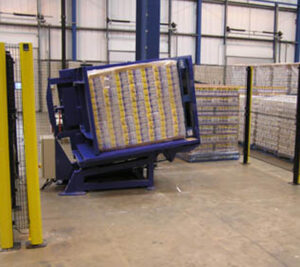
I know the pressure you're under to improve efficiency and cut costs. As an engineer and a factory owner myself, every investment has to prove its worth. A pallet inverter isn't just another machine; it's a foundational piece of a modern, efficient logistics operation. It directly addresses the core challenges of speed, safety, and cost. Let's dig deeper into the specific questions that managers and owners in the US ask me about this technology. We'll break down exactly how it can change your business.
How Can a Pallet Inverter Immediately Boost Your Warehouse Productivity?
Do you find your shipping department constantly falling behind schedule? A forklift operator has to wait while a team manually unloads and re-stacks a pallet. This process is slow and creates a major bottleneck that ripples through your entire operation. The truck driver is waiting, your production line might be backing up, and your team is rushing, which increases the chance of errors and accidents. This wasted time is lost productivity, and it happens with every single pallet that needs to be switched.
This isn't just an operational slowdown; it's a direct hit to your bottom line. You are paying for labor hours that are spent on a low-value, repetitive task. The longer it takes, the less your team can accomplish in a day. It limits your facility's throughput and your ability to meet fluctuating customer demands quickly.
A pallet inverter immediately boosts warehouse productivity by automating the entire load transfer process. It reduces the time required to switch a pallet from 15-20 minutes of manual labor down to a consistent, predictable cycle of under two minutes. This eliminates the bottleneck, allowing forklifts to move on to other tasks, and ensures a smooth, continuous flow of goods through your facility, directly increasing your overall throughput.
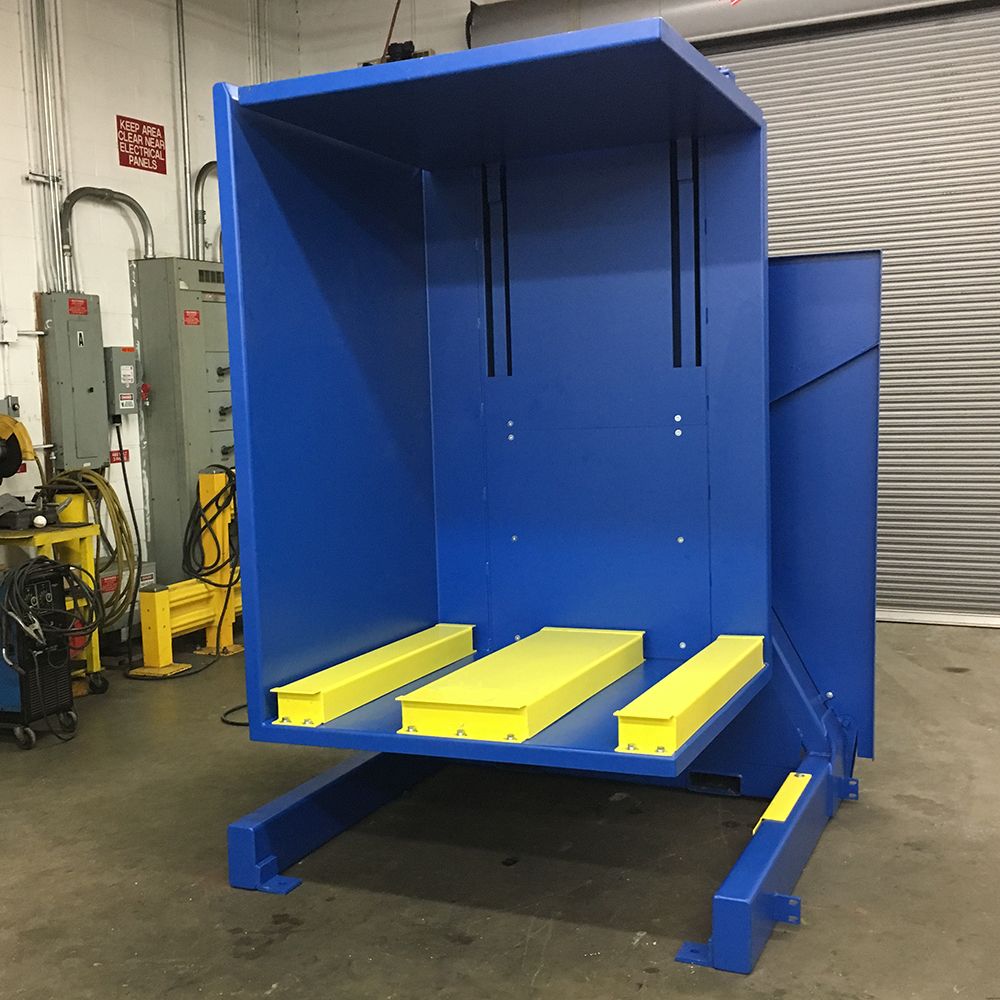
A Deeper Look at Throughput and Efficiency
When we talk about productivity, we're really talking about throughput—how much product you can move through a process in a given amount of time. Let's break down the impact of a pallet inverter with a direct comparison.
Manual vs. Automated: A Time Analysis
Imagine a scenario where you need to switch 50 pallets in a single shift.
| Metric | Manual Pallet Transfer | Pallet Inverter Transfer |
|---|---|---|
| Personnel Required | 2-3 workers | 1 forklift operator |
| Time per Pallet | 15 minutes (average) | 1.5 minutes (average) |
| Total Time for 50 Pallets | 750 minutes (12.5 hours) | 75 minutes (1.25 hours) |
| Risk of Product Damage | High (due to manual handling) | Very Low (secure clamping) |
| Risk of Injury | High (lifting, repetitive motion) | Minimal (operator stays in cab) |
As you can see from the table, the time savings are enormous. What took two or three people an entire shift and a half to complete can now be done by one person in just over an hour. This frees up your team to focus on more valuable tasks like order picking, quality control, or inventory management.
The Ripple Effect of Consistency
Beyond the raw speed, automation introduces consistency. A machine performs the same cycle, in the same amount of time, every single time. Manual labor is variable. A team might be fast at the beginning of a shift but will slow down due to fatigue. This inconsistency makes planning difficult. With a pallet inverter, you can accurately predict your workflow and schedule your logistics with precision. This reliability is crucial for managers like Javier who are aiming for 95% equipment uptime. When your pallet handling is predictable, it stops being a source of unexpected delays that disrupt your carefully planned production schedules. This consistency is a core principle of Lean Manufacturing and is essential for building a truly efficient operation in the competitive US market.
What is the Real ROI of a Pallet Inverter Beyond Just Labor Savings?
When you consider buying new equipment, your first question is likely about the return on investment (ROI). It's easy to calculate the labor savings, but many factory owners in the United States stop there. They see the price tag and compare it only to the wages of a few workers. This narrow view can cause you to miss the bigger picture. The hidden costs of your current manual process—product damage, workplace injuries, and pallet management—are likely much higher than you realize.
Focusing only on labor savings is like looking at just one piece of the puzzle. You might decide the investment isn't worth it, while you continue to lose money every day from damaged goods being written off or from a stop-work order due to an injury. The real financial impact is spread across multiple parts of your business.
The real ROI of a pallet inverter extends far beyond direct labor savings. It delivers significant financial returns by drastically reducing costs from product damage, lowering workers' compensation insurance premiums by creating a safer work environment, and optimizing pallet inventory by allowing you to use cheaper, reusable in-house pallets instead of expensive export-grade ones. These combined savings often result in a full payback period of less than 18 months.
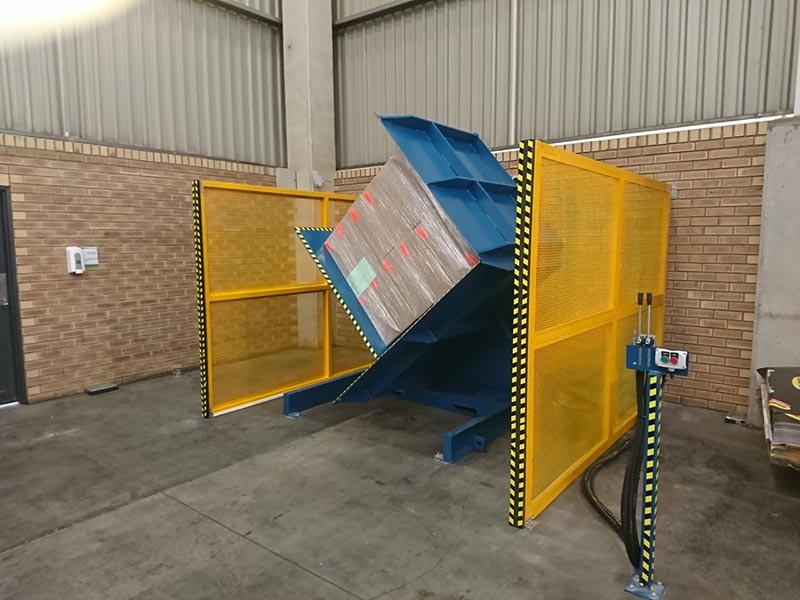
Breaking Down the Full Return on Investment
When I founded SHJLPACK, I had to justify every single dollar of spending. I learned to look at an investment from every angle. A pallet inverter is a perfect example of a machine with multiple streams of value. Let's build a more complete ROI picture, like the one a strategic factory owner like Javier would demand.
The Four Pillars of Pallet Inverter ROI
| Cost Center | Manual Process Cost | Pallet Inverter Benefit | Estimated Annual Savings (Example) |
|---|---|---|---|
| 1. Labor | High cost of 2-3 workers for a non-value-added task. | Reduces need to 1 operator for a fraction of the time. | $50,000 - $80,000 |
| 2. Product Damage | 1-3% of goods damaged during manual transfer. | Secure clamping system reduces damage to near zero. | $15,000 - $40,000 |
| 3. Worker Safety | High risk of back injuries leads to high insurance premiums and lost time. | Eliminates manual lifting, drastically cutting injury risk and insurance costs. | $10,000 - $25,000 |
| 4. Pallet Costs | Must buy expensive, compliant pallets for export. Rent or lose pallets. | Switch loads to cheap in-house pallets, keeping your good pallets. | $20,000 - $60,000 |
Beyond the Numbers: Strategic Value
The ROI isn't just about saving money; it's also about enabling growth.
- Faster Dock-to-Stock: By speeding up the receiving process, you get raw materials into production faster.
- Improved Supplier Relationships: You can quickly return pallets to suppliers, avoiding rental fees and improving goodwill.
- Enhanced Brand Reputation: Shipping products on clean, high-quality pallets sends a message of professionalism to your customers. Dirty or broken pallets can damage your brand image before the box is even opened.
For a CEO aiming to reduce overall operational costs by 8%, a pallet inverter is a powerful tool. It doesn’t just trim one expense; it attacks four major cost centers simultaneously, delivering a comprehensive financial benefit that is hard to ignore.
How Do Modern Pallet Inverters Integrate with Digital Factory Systems?
You are building a smart factory. You have invested in Manufacturing Execution Systems (MES) and are using data to make decisions. But then you have a piece of "dumb" equipment on your floor. It's an island. It does its job, but it doesn't talk to anything else. This creates a black hole in your data stream. You can't track its performance, schedule its use intelligently, or know if it's about to fail.
This disconnect undermines your entire digital transformation strategy. A smart factory relies on seamless communication between all its parts. An isolated machine forces you back to manual tracking with clipboards and spreadsheets, which is slow, inefficient, and prone to errors. It prevents you from achieving the total production visibility that you're aiming for.
Modern pallet inverters are designed for seamless integration with digital factory systems. They are equipped with advanced PLCs (Programmable Logic Controllers) that can communicate directly with your MES or ERP software. This connection allows you to send automated commands to the inverter and receive critical data back, such as cycle counts, operating status, and diagnostic alerts, making it a fully integrated component of your smart factory ecosystem.
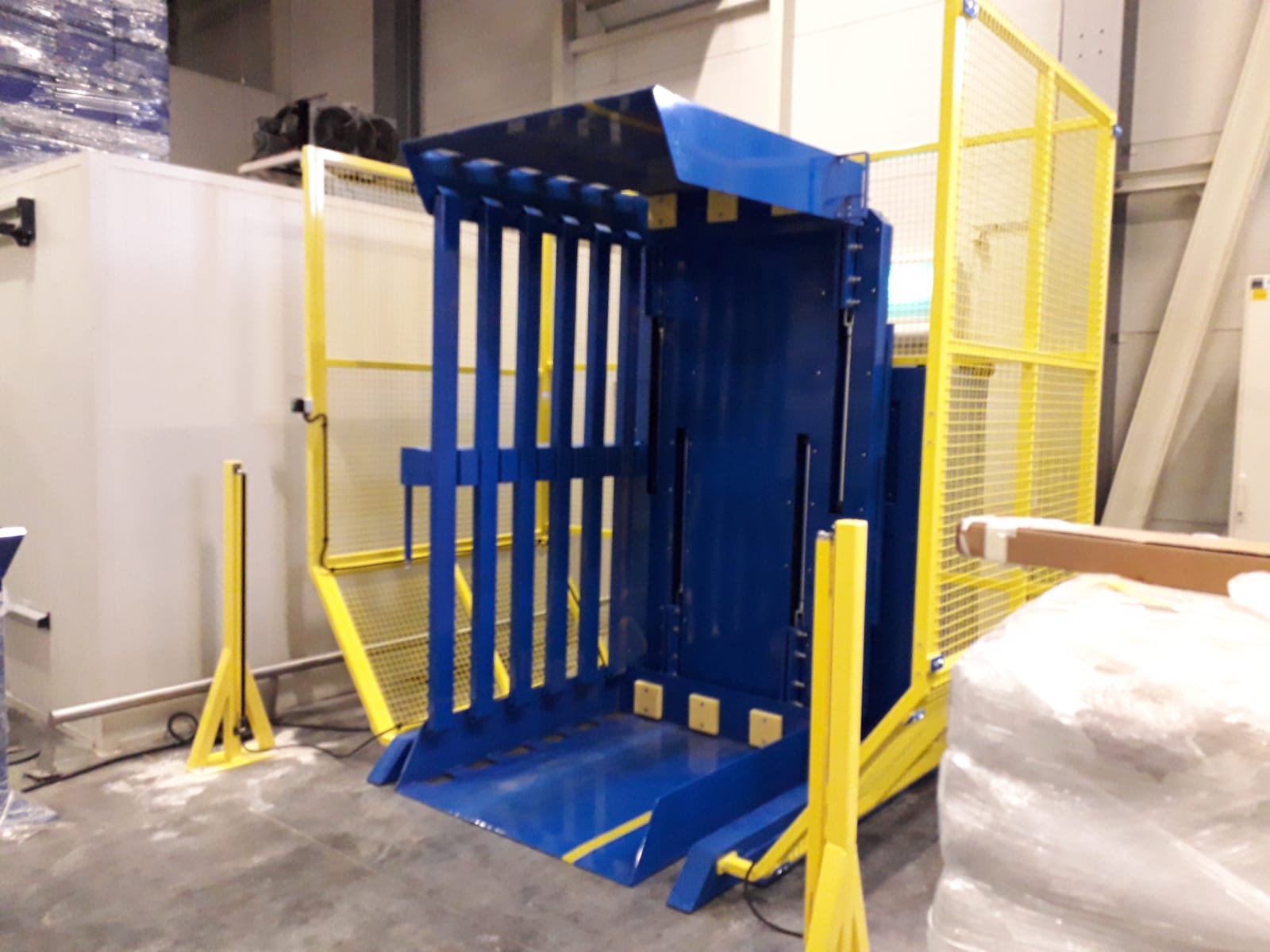
Enabling Data-Driven Operations
Integrating a pallet inverter into your digital network is not just about convenience; it's about unlocking a new level of operational intelligence. I've worked with clients in the United States to connect our machines to their central control systems, and the results are always transformative. Here’s how it works in practice.
The Flow of Information
- ERP to MES: Your ERP system sends a production order to the MES. This order includes details about the product and the type of pallet required for final shipping.
- MES to Pallet Inverter: As the goods reach the end of the line, the MES sends a command to the pallet inverter's PLC. This command could specify, "This upcoming load needs to be inverted and placed on a 48x40 plastic pallet."
- Pallet Inverter to MES: Once the cycle is complete, the inverter's PLC sends data back to the MES. This confirms the task is done and provides valuable operational metrics.
What Data Can You Collect and How Can You Use It?
The data you get back is the key to optimization. It turns your pallet inverter from a simple machine into a source of business intelligence.
| Data Point | How to Use It | Strategic Benefit |
|---|---|---|
| Cycle Count | Track the number of pallets processed per shift, day, or week. | Accurately measure throughput and verify production targets. |
| Cycle Time | Monitor the duration of each inversion cycle. | Identify any slowdowns or mechanical issues before they become major problems. |
| Fault Codes/Alerts | Receive instant notifications for any operational errors or sensor issues. | Enable predictive maintenance, a key goal for Javier, reducing unexpected downtime. |
| Operating Status | See in real-time if the machine is running, idle, or in a fault state. | Achieve total production visibility, another of Javier's goals. |
For a CEO focused on digitalization, this integration is non-negotiable. It provides the data needed for smart scheduling, helps achieve the goal of 95% equipment uptime through predictive maintenance, and makes the pallet inverter a transparent, contributing member of a fully connected, intelligent manufacturing environment.
Can Customizing a Pallet Inverter Solve Unique Material Handling Challenges?
You have a unique product. Maybe it's very heavy, extremely fragile, or has an unusual shape. You look at standard, off-the-shelf equipment, and it just doesn't seem right. You worry a standard machine will damage your product or won't fit into the tight space you have available in your facility. This is a common problem I hear from specialized manufacturers in the US.
Trying to force a one-size-fits-all solution into a unique workflow is a recipe for failure. It leads to inefficiency, potential product damage, and constant frustration for your team. You end up compromising your process to fit the machine, when it should be the other way around. You don't just need a supplier; you need a partner who can understand your specific problem and engineer a solution for it.
Yes, customizing a pallet inverter is often the best way to solve unique material handling challenges. A specialized manufacturer can modify every aspect of the machine—from the clamping pressure and rotation speed to the overall footprint and construction material—to perfectly match your product's requirements and your facility's layout. This tailored approach ensures maximum efficiency, safety, and performance where a standard model would fail.
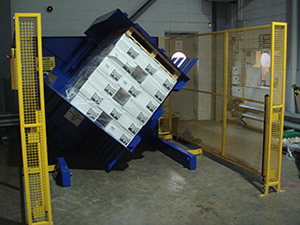
Engineering the Perfect Fit: Customization Options
When a client comes to me with a unique challenge, I see it as an engineering puzzle. My journey started on the factory floor, so I understand that no two operations are exactly alike. The right solution requires listening first, then designing. Here are some of the common customizations we implement to solve specific problems.
Key Areas for Customization
| Feature | Standard Offering | Custom Solution Example & Benefit |
|---|---|---|
| Clamping Pressure | Fixed or manually adjusted pressure. | Variable Pressure Control: An operator can select a pre-programmed setting for different products (e.g., "heavy steel" vs. "boxed electronics"). This prevents crushing fragile goods while ensuring heavy loads are secure. |
| Load Capacity | Typically up to 1,500 kg (3,300 lbs). | Heavy-Duty Construction: For industries like steel or paper, we can engineer the frame and hydraulics to handle loads of 3,000 kg (6,600 lbs) or more, ensuring safety and durability. |
| Machine Footprint | Standard dimensions. | Compact or Modified Design: We can rearrange the hydraulic power pack and control panel to fit the machine into a tight corner or integrate it directly at the end of a specific conveyor line, saving valuable floor space. |
| Construction Material | Painted carbon steel. | Stainless Steel Construction: For food, beverage, or pharmaceutical industries in the US, a full stainless steel build is required to meet FDA hygiene and washdown standards. |
| Loading Method | Forklift loading only. | Integrated Conveyor System: We can add powered conveyors on the entry and exit sides for a fully automated, "hands-off" process that integrates seamlessly with an automated guided vehicle (AGV) system. |
This level of customization is what separates a simple supplier from a true strategic partner. A partner takes the time to understand your goals, like Javier's need for both production stability and innovation. They analyze your workflow and design a piece of equipment that becomes a natural and efficient part of your process, rather than an obstacle to work around. The right machine shouldn't force you to change; it should empower your existing process to be better.
How Do Pallet Inverters Contribute to a Safer and Greener Warehouse?
The pressure on US businesses to improve both workplace safety and environmental sustainability is immense. On one hand, a single serious back injury from manual lifting can lead to devastating consequences for an employee and massive costs for the company in terms of insurance and lost productivity. On the other hand, governments and customers are demanding greener supply chains and less waste. These two challenges seem separate, but they are both symptoms of an outdated, inefficient process.
Continuing with manual pallet handling means you are accepting the high risk of injuries as a cost of doing business. It also means you are participating in a wasteful, linear supply chain where you constantly purchase and dispose of wooden pallets. This approach is not only costly but also unsustainable in the long run, exposing you to rising regulatory and social pressure.
Pallet inverters contribute to a safer and greener warehouse by directly addressing two key issues. First, they eliminate the dangerous manual labor of lifting and re-stacking heavy loads, drastically reducing the risk of ergonomic injuries. Second, they enable a circular pallet economy by allowing you to easily transfer goods from expensive, disposable shipping pallets to cheaper, durable, and reusable in-house pallets, significantly cutting down on wood waste and disposal costs.

Building a Culture of Safety
The most immediate impact of a pallet inverter is on the health and safety of your team. Manual pallet handling is a textbook example of a high-risk task.
- Ergonomic Risk: Repetitive bending, lifting heavy boxes, and twisting are leading causes of musculoskeletal disorders (MSDs), which are the number one cause of workplace injuries in the United States.
- Striking Hazards: Unstable, manually stacked loads can shift or fall, creating a serious hazard for anyone nearby.
A pallet inverter removes the person from the hazard. The operator stays safely within the forklift cab or behind a control panel. The machine's secure clamping system holds the load firmly in place throughout the 180-degree rotation. This simple change in process design practically eliminates the risk of these common injuries. For a CEO like Javier, who is concerned about the stability of his workforce and the rising costs associated with aging equipment and processes, creating a safer environment is a direct investment in operational resilience.
Championing Environmental Sustainability
The "green" aspect is just as compelling. Think about the lifecycle of a typical one-way shipping pallet. It's purchased, used once, and then often discarded. This creates a huge amount of wood waste. A pallet inverter allows you to break this cycle.
The In-House Pallet Strategy
- Receive Goods: Your supplier sends products on their standard wooden pallets.
- Invert the Load: At your receiving dock, you use the pallet inverter to transfer the entire load onto one of your own durable plastic or captive wood pallets.
- Return or Recycle: You can immediately return the original pallet to the supplier or send it to a recycling depot.
- Internal Use: Your high-quality in-house pallet is used for storage and movement within your facility, where it can last for years.
This strategy directly supports Javier's goal of reducing operational costs and meeting environmental regulations. You spend less on pallet purchasing and disposal, and you can demonstrate a clear, measurable reduction in your company's waste stream. It's a win for your budget and a win for the environment.
My Perspective as an Engineer and Factory Owner
I started my career as an engineer on the factory floor. I spent years getting my hands dirty, fixing machines, and seeing firsthand what works and what doesn't. Later, when I built my own packing machine factory, I was the one signing the checks. I know exactly what it feels like to be in Javier's position: weighing the cost of a new machine against the demands of payroll, raw material costs, and a dozen other pressures. You have to be certain an investment will pay off.
Through that journey, from engineer to owner, I learned a powerful lesson. The most successful investments are never just about the hardware. A machine is a tool, but the real value comes from the partnership behind it. It's about finding someone who understands your challenges—the pressure on energy costs, the frustration of aging equipment, the need to digitize—and who is committed to helping you solve them.
When I look at a piece of equipment like a pallet inverter, I don't just see steel and hydraulics. I see a solution. I see a way to remove a physical burden from a worker's back. I see a way to stop good products from being damaged. I see a small change that can unlock massive gains in efficiency, helping a business grow and succeed.
My mission with SHJLPACK isn't just to sell machines. It's to share the knowledge I was so grateful to learn. It's about giving back to the industry that allowed me to build my own success. I believe that by helping people like Javier find the right solutions, we can make the entire industry stronger, safer, and more efficient. That is the true "total solution."
Conclusion
A pallet inverter is more than a machine. It is a strategic move towards a safer, smarter, and more profitable material handling operation that will support your business for years.



